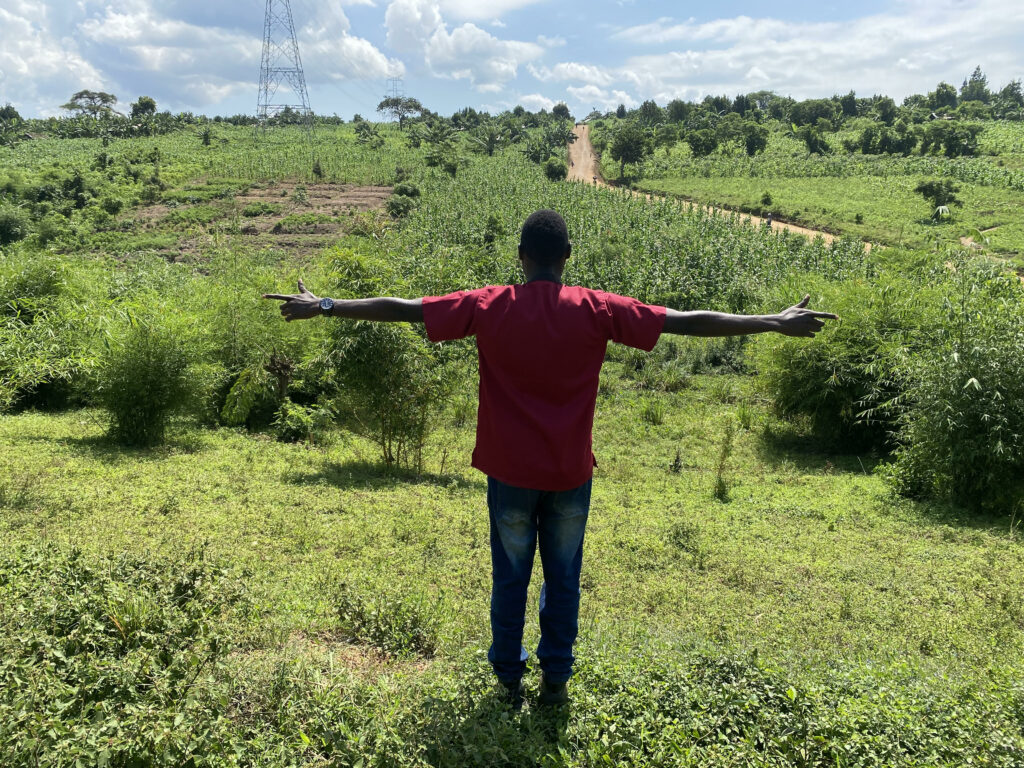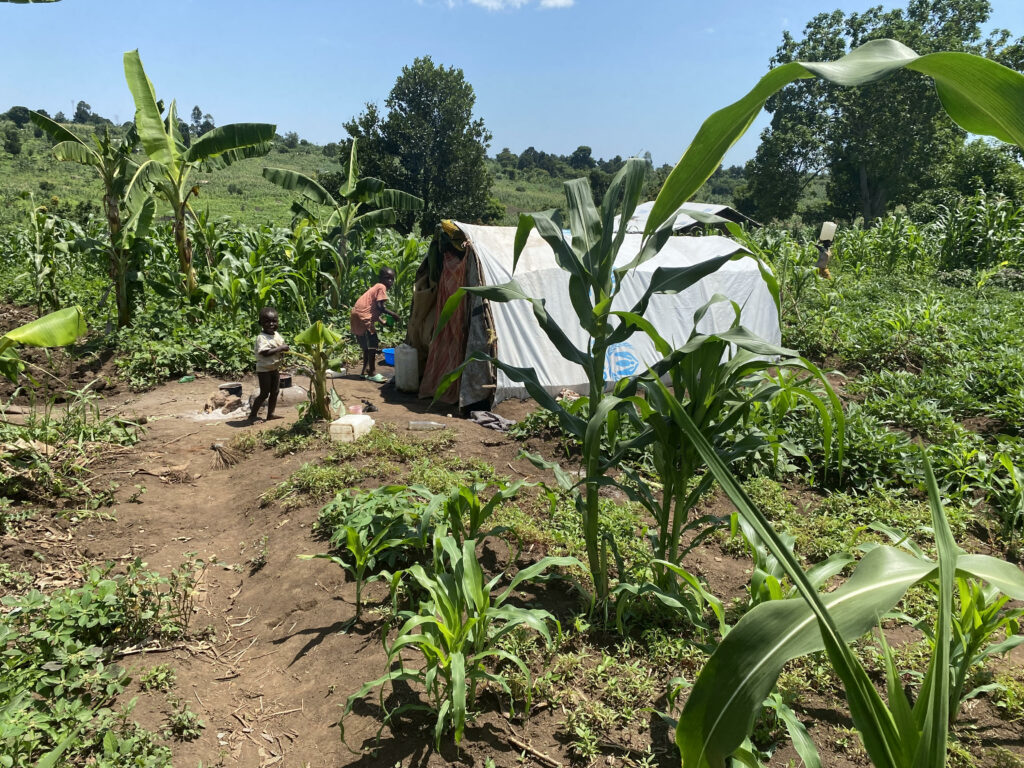
TREES, THE BACKBONE OF REFUGEES’ LIVELIHOODS IN KYANGWALI REFUGEE SETTLEMENT WESTERN UGANDA
Wycliff Talemwa
(Université Félix Houphouët-Boigny (UFHB) CABES organization)

Figure 1 Restoration of degraded wetland inside Kyangwali refugee settlement
Inside Kyangwali refugee settlement
Walking through Kyangwali refugee settlement gives you a glimpse of the geographical features that shape the area. The maize fields sway in the gentle breeze, interspersed with the vibrant green bean leaves, while the universal banana plantations, locally known as matooke, paint a picture of lush vegetation. Adding to this attractive landscape are the different tree woodlots that primarily consist of the sturdy Grevillea robusta and Eucalyptus species, providing a complementary green backdrop.
Amidst the natural beauty, the household plots measuring 30m x 20m are a testament to the resourcefulness of the residents. Scattered fruit and timber species populate these plots, their branches pruned in a chaotic manner, stripped bare to serve as a vital source of firewood. The signs of energy scarcity are evident, with less than 10% of the branches left untouched, highlighting the importance of this fuel source. The trees, albeit poorly pruned, serve the purpose of providing fuelwood for cooking, a necessity that drives the residents to harvest as many branches as possible, irrespective of the aesthetics of the trees. This poignant sight underlines the daily challenges faced by the refugees, where every resource is utilized to sustain their livelihoods.

Figure 2 Restored wetland using bamboo and a hill scenic view of banana plantations plus scattered trees
The refugees’ forest needs
The refugees, predominantly from the neighboring Democratic Republic of Congo, have sought refuge in Uganda to escape the ravages of war. The refugees have unique needs centered around the forests, spanning from the essential requirement for fuelwood for cooking and trading, to the need for poles for constructing their temporary shelters, as well as areas for cooking and utensil drying. While assistance is provided in the form of food and non-timber essentials like basins and tents, a critical gap exists that is the absence of fuel for cooking. As a result, the refugees are compelled to rely on the limited, scattered trees in the settlements, emphasizing the profound challenges they face. Consequently, the remaining trees stand as the only source of hope for these refugees. Trees not only provide essential resources for immediate survival, but they also play a crucial role in maintaining the environmental equilibrium of these fragile habitats.

Figure 3 Different refugees’ homes in Kyangwali refugee settlement
Impacts of overreliance on forests
It’s important to recognize that the overreliance on trees within refugee settlements has far-reaching consequences, ultimately leading to the degradation of the very resources that are vital for their sustenance. By exceeding the carrying capacity of the local forests, the demand for resources outstrips the capacity of the environment to regenerate, resulting in deforestation, soil erosion, and loss of biodiversity. This, in turn, exacerbates the challenges faced by refugees, creating a vicious cycle of environmental degradation and vulnerability. Without the foundational support provided by trees, the ability of refugees to establish temporary shelter, source fuel for cooking, and obtain materials for construction would become severely compromised. The absence of trees would not only impact the practical aspects of survival but also erode the sense of hope and resilience that these natural resources instill within refugee communities.
According to the Food and Agriculture Organization (FAO) and the UN Refugee Agency (UNHCR) in their joint report in 2018, a staggering 80% of displaced people and refugees rely on forests and forest products to meet their basic needs. This heavy reliance on forest resources has led to significant pressures on the surrounding ecosystems, as the increased demand for forest products has contributed to widespread forest degradation and deforestation (FAO and UNHCR, 2018). The situation in Kyangwali refugee settlement in western Uganda is deeply concerning, as the escalating demand for wood to meet the needs of the refugees has led to significant deforestation in the area. The proximity of the settlement to the Bugoma central forest reserve has made it convenient for the refugees to access the forest for firewood and other timber products, contributing to the loss of precious forest cover. The impact of this deforestation goes beyond environmental concerns, as it also affects the sustainability of the refugee settlement and the delicate balance of the ecosystem. The allowance for refugees to collect firewood from the natural forest on Saturdays is a temporary solution to address their immediate energy needs.

Figure 4 Community engagement with the refugees under the shades provided by different tree species
What needs to be done
The intertwined relationship between refugees and forest ecosystems calls for comprehensive strategies that address the environmental impact of displacement, while also considering the livelihoods and well-being of the affected populations. Efforts to support the sustainable use of forest resources and the implementation of conservation initiatives are crucial in mitigating the adverse effects of increased demand and safeguarding the invaluable ecosystems that provide vital resources and ecological services. It is crucial to address these issues through sustainable resource management and conservation efforts to ensure the preservation of vital forest ecosystems for present and future generations.


